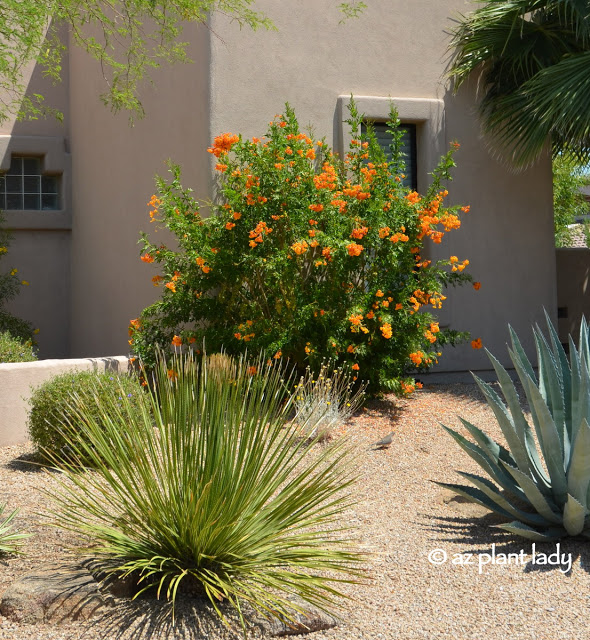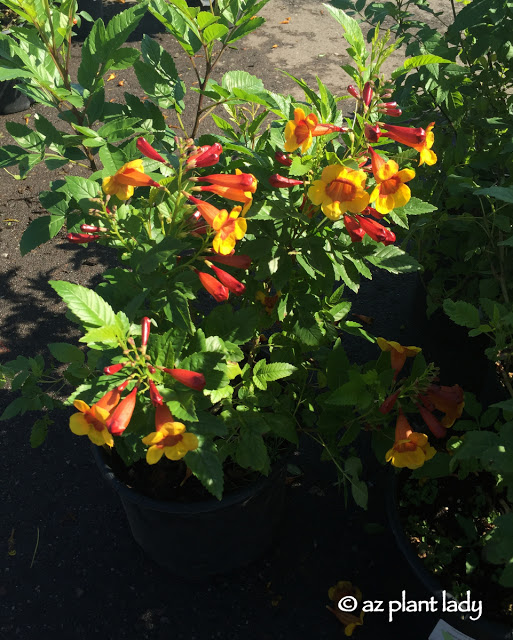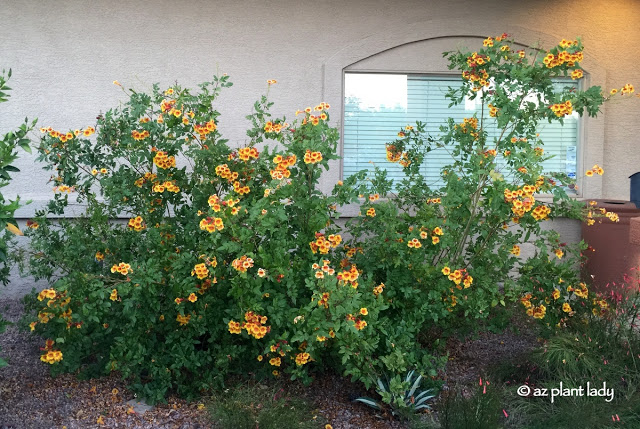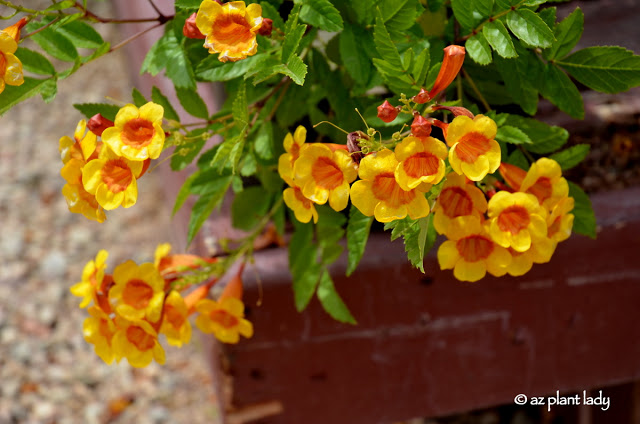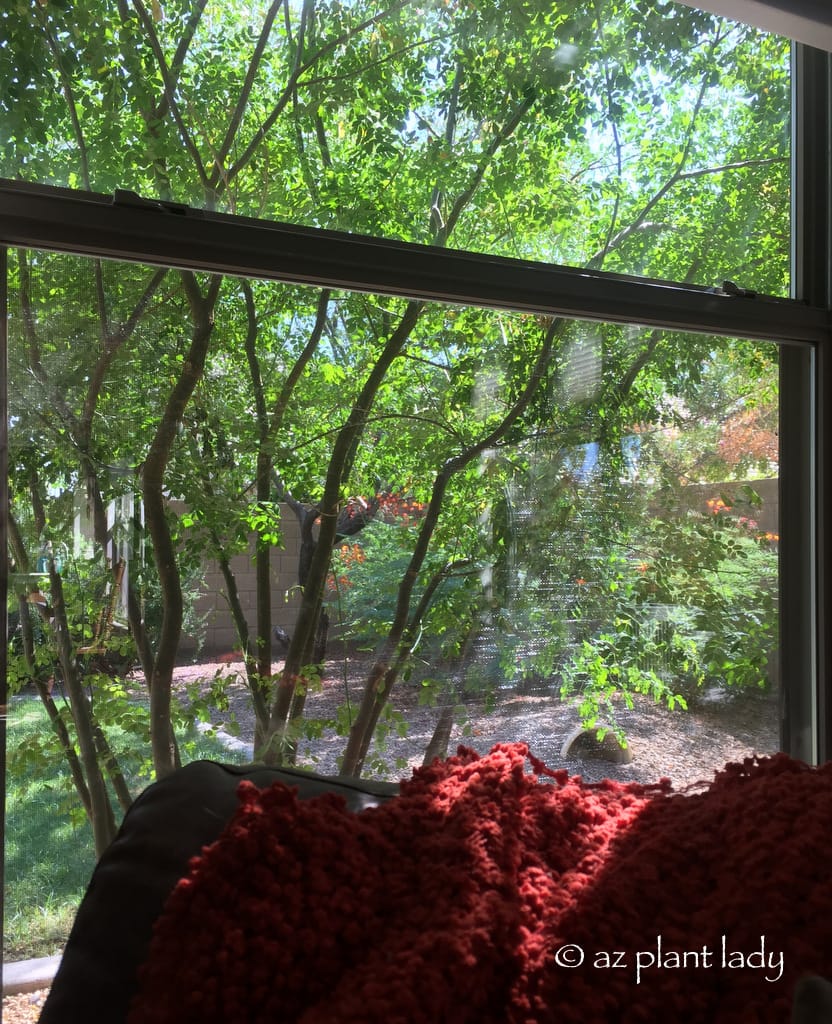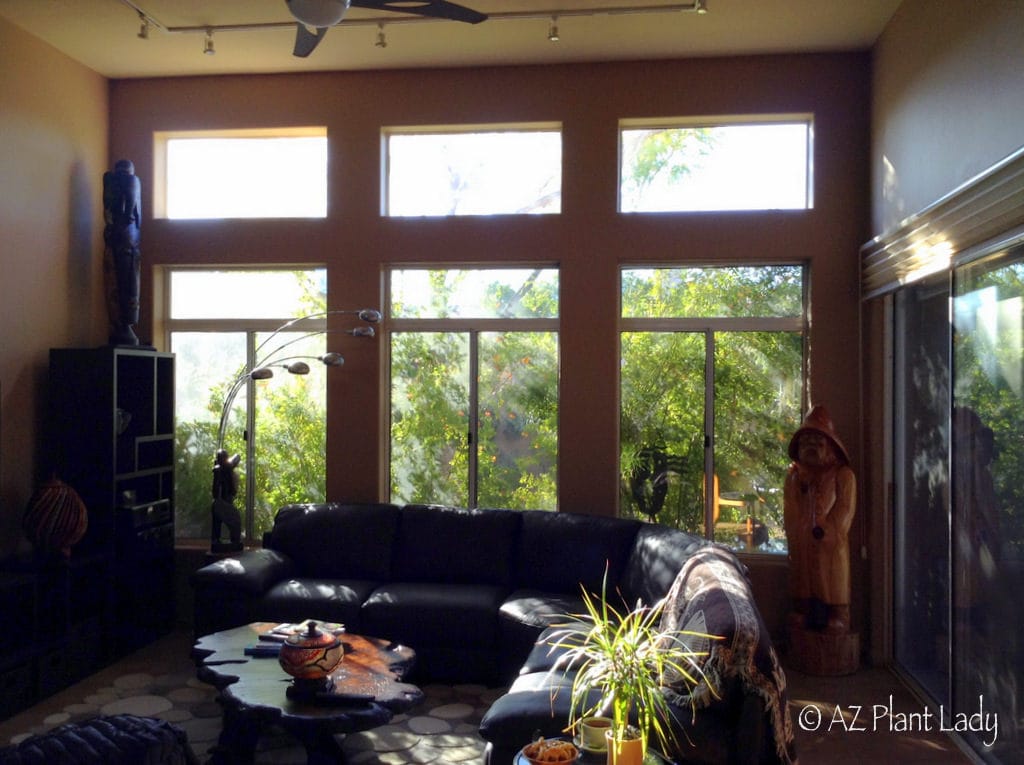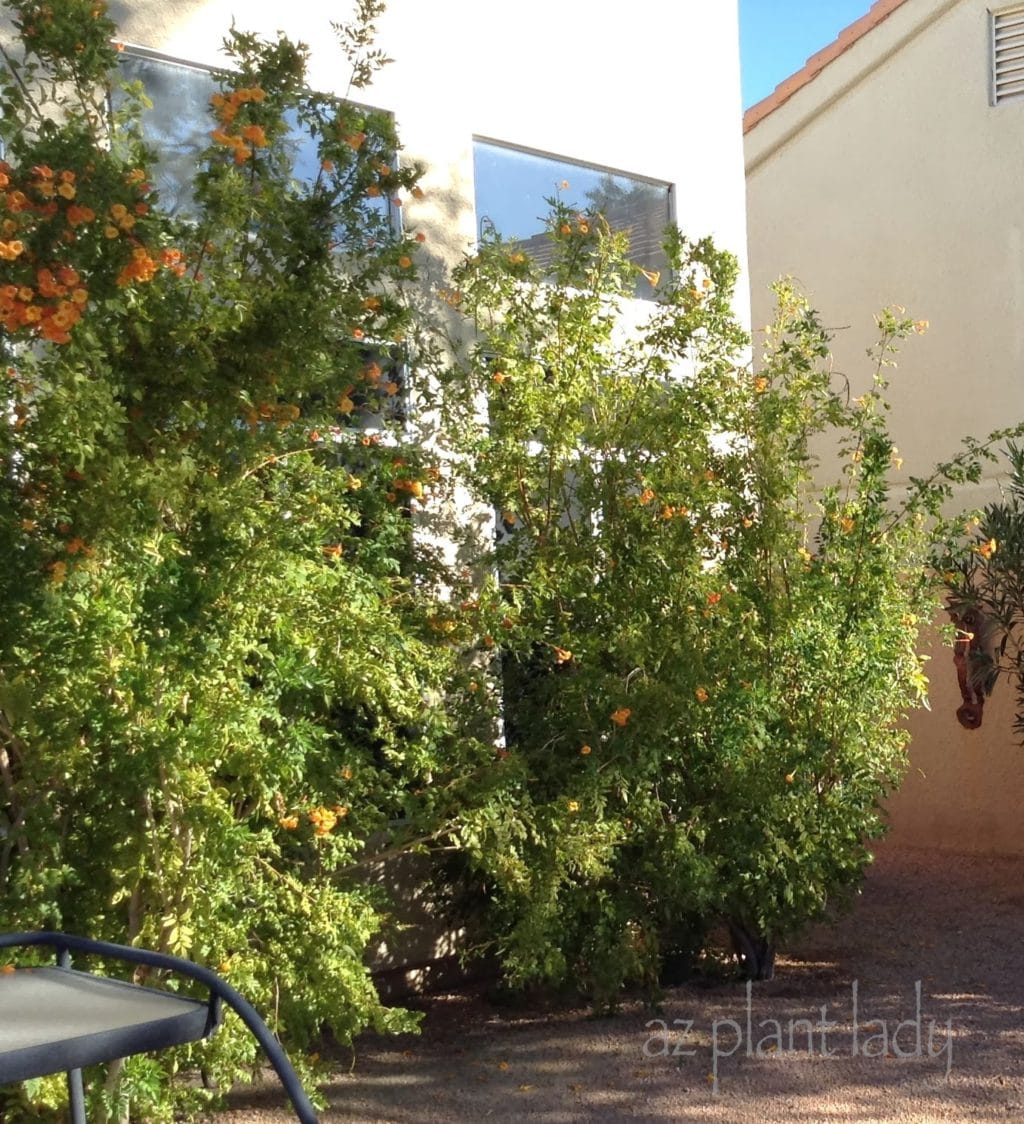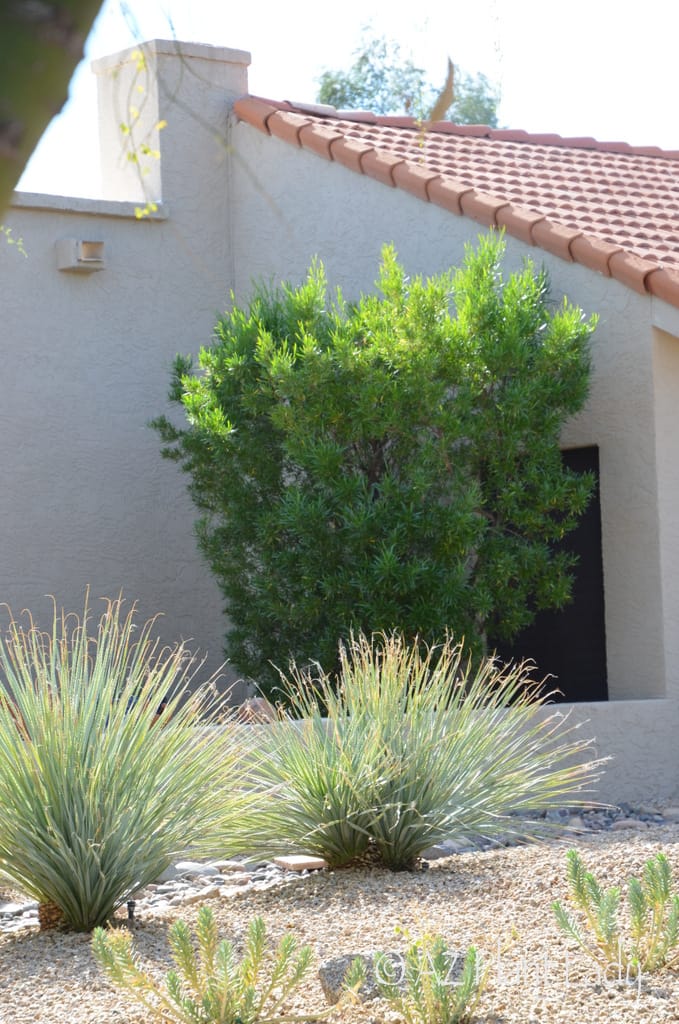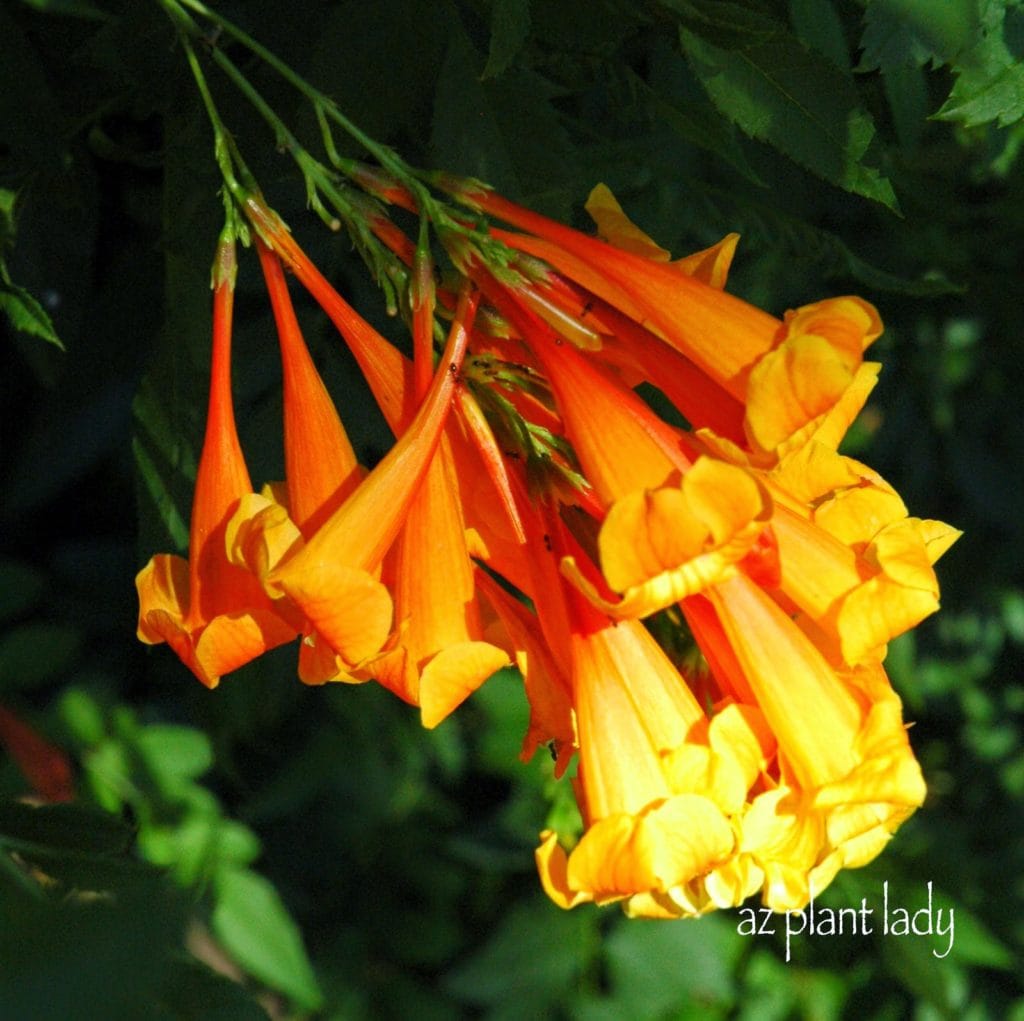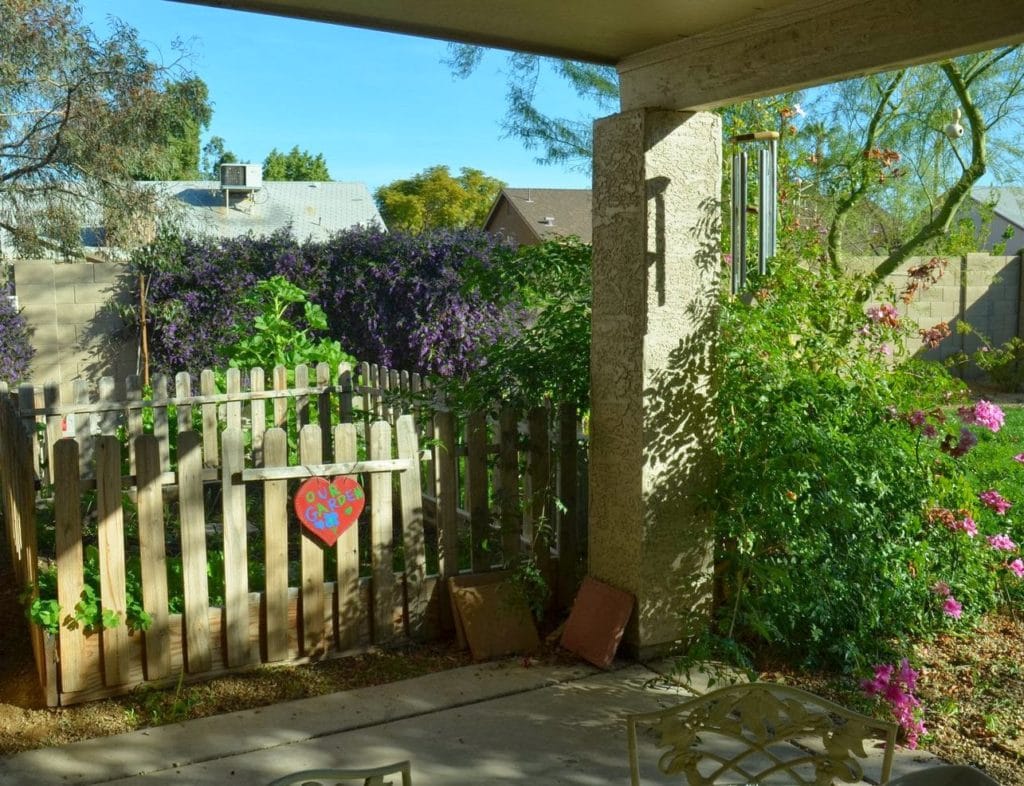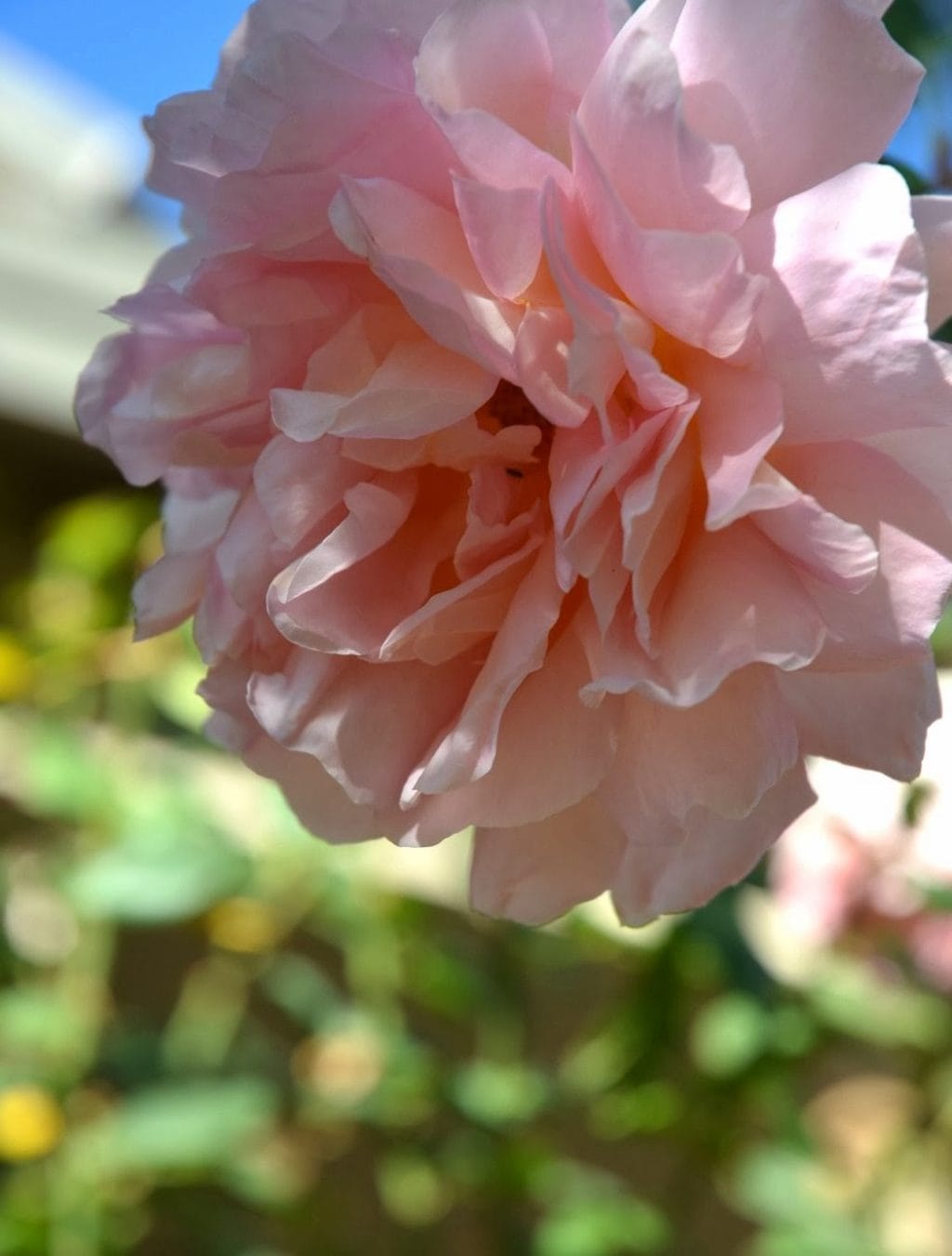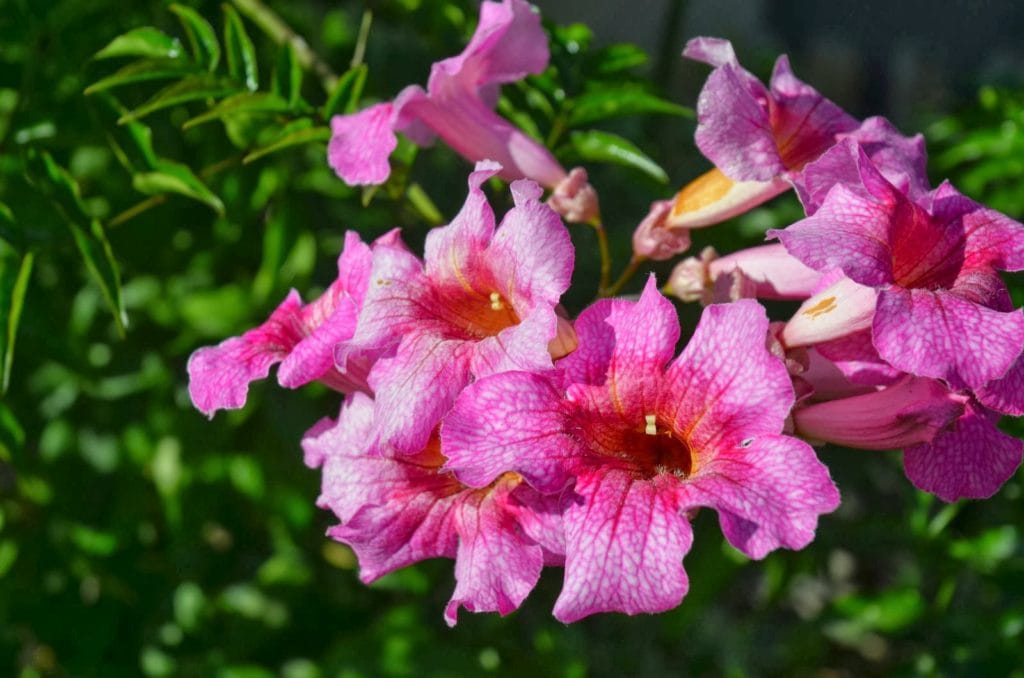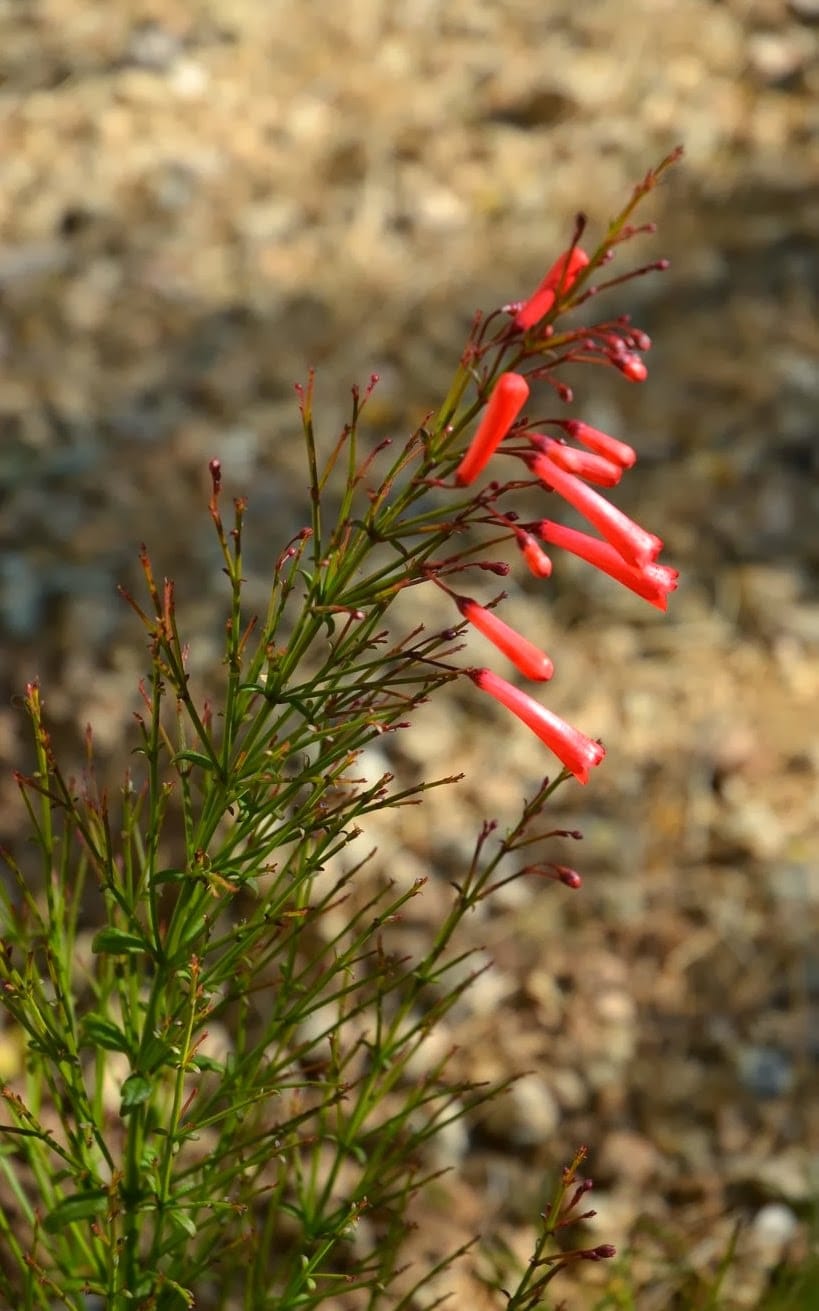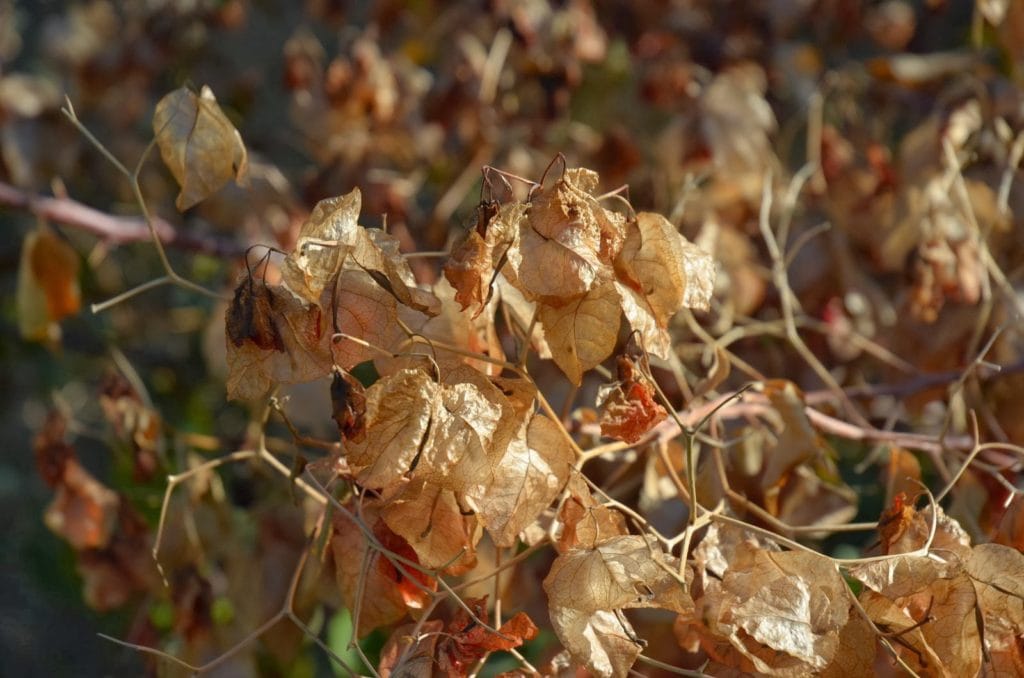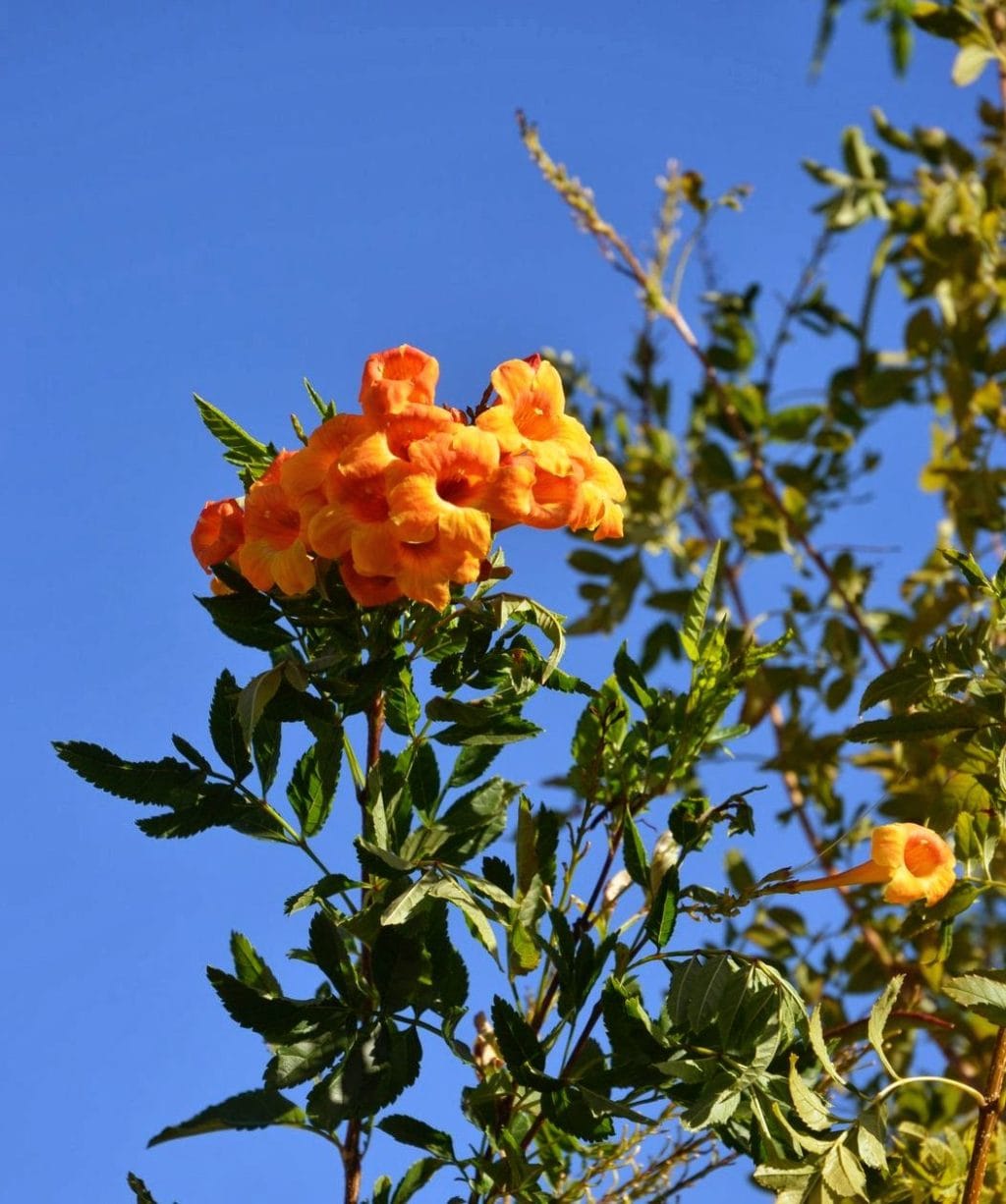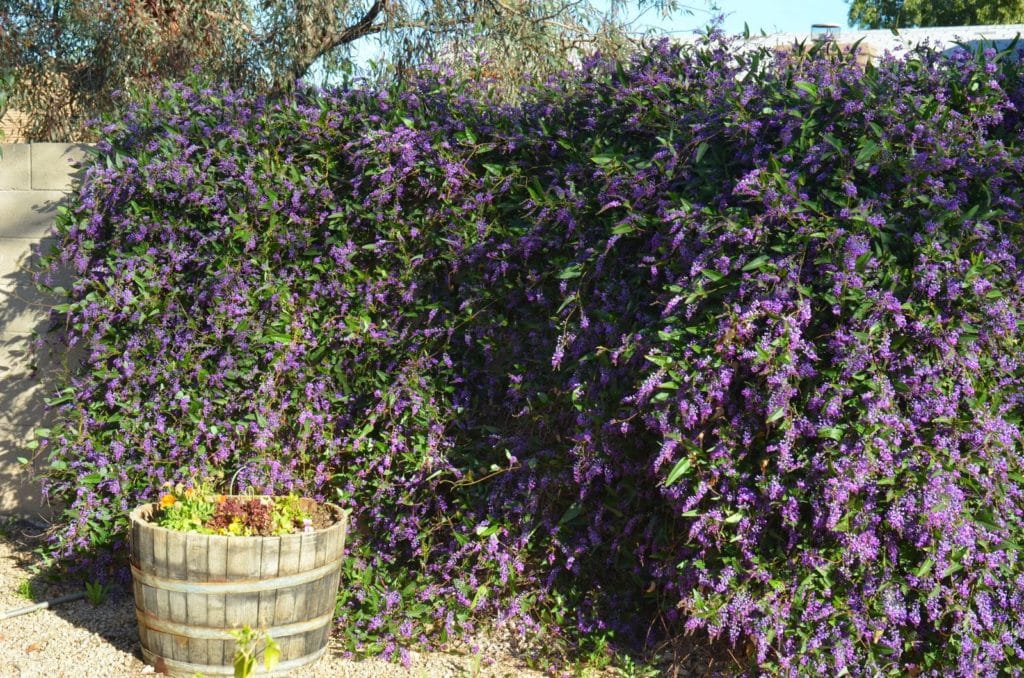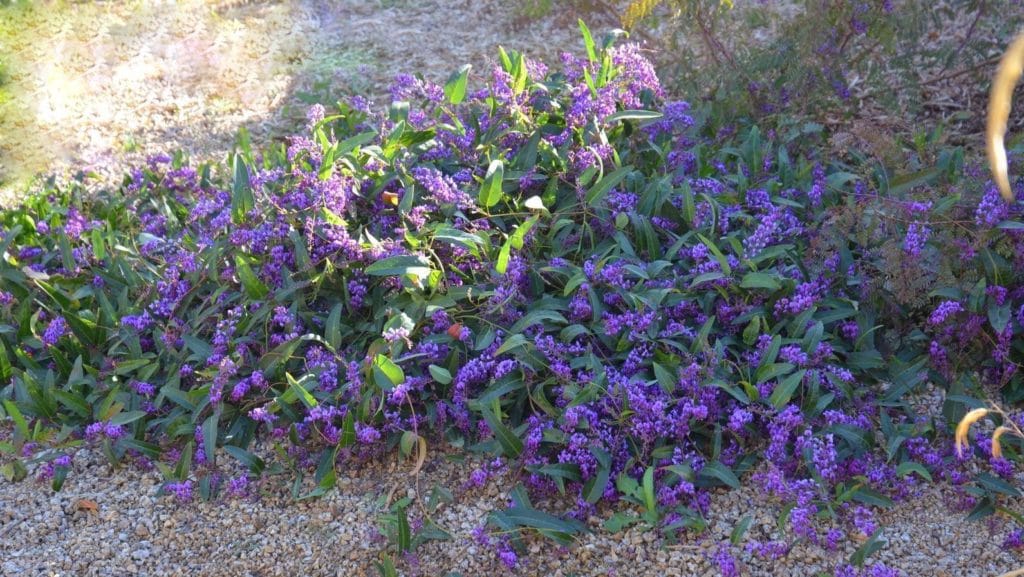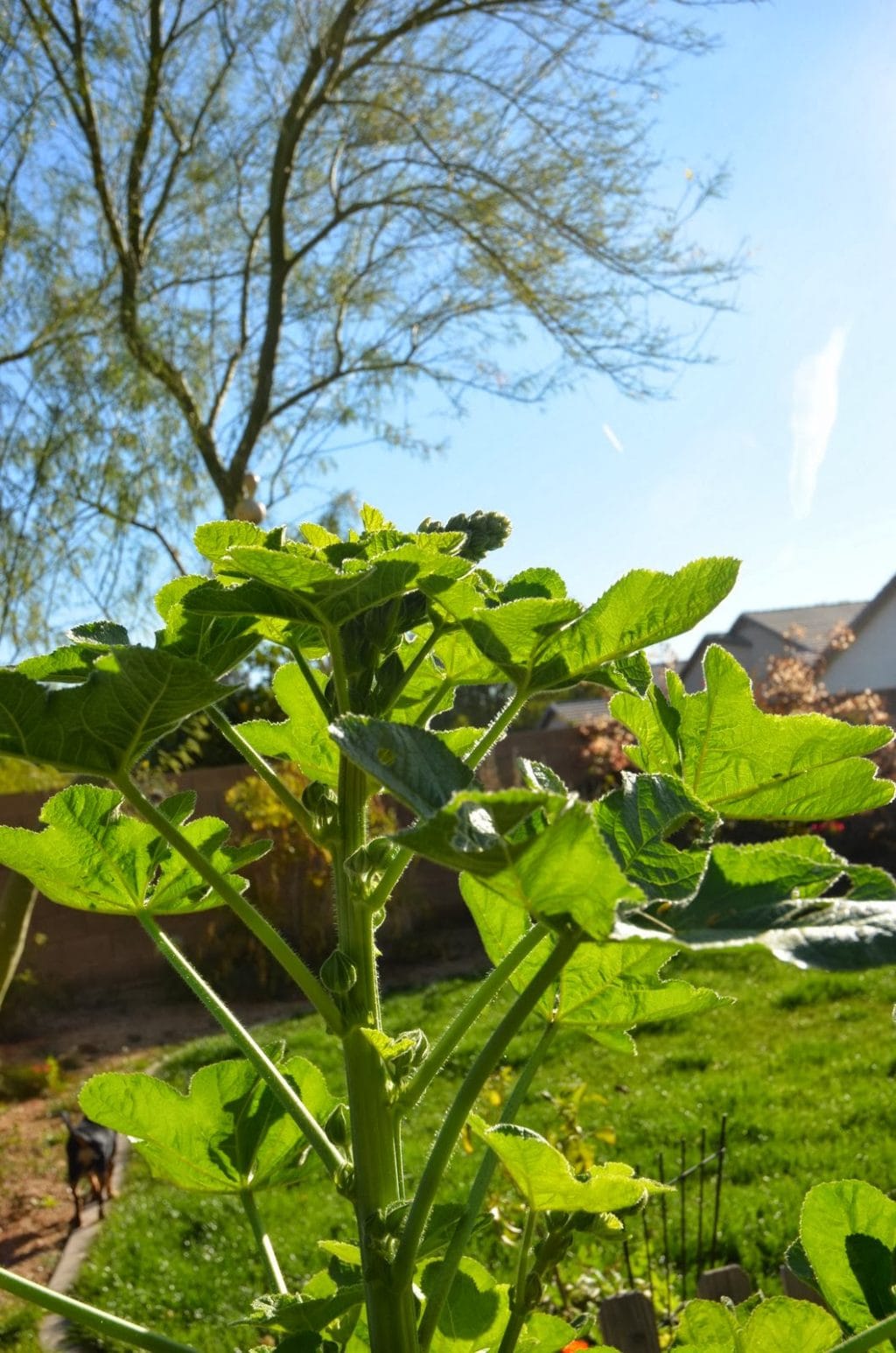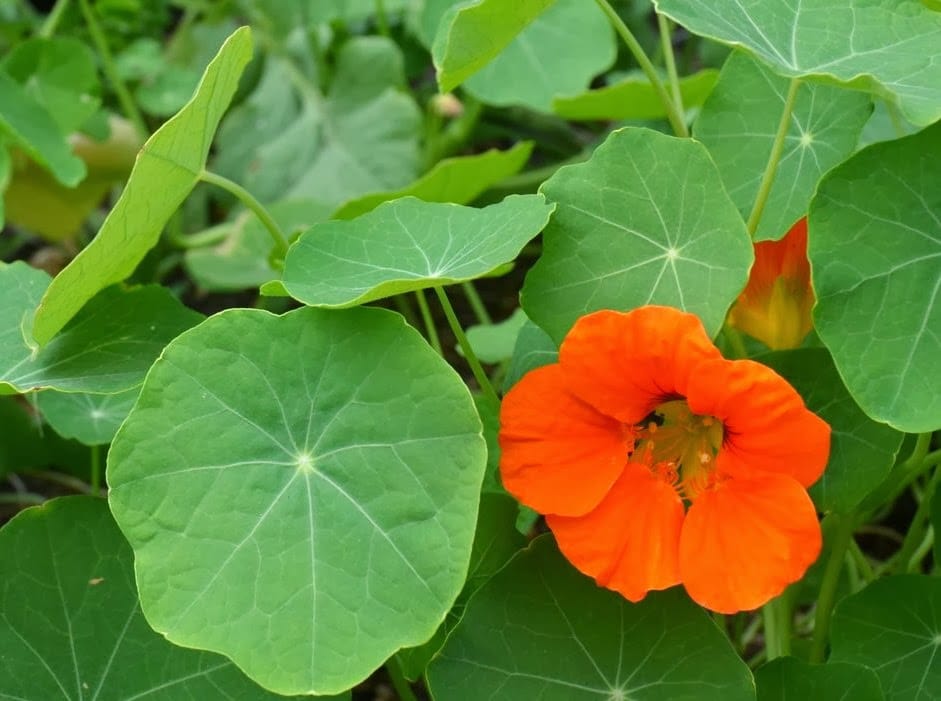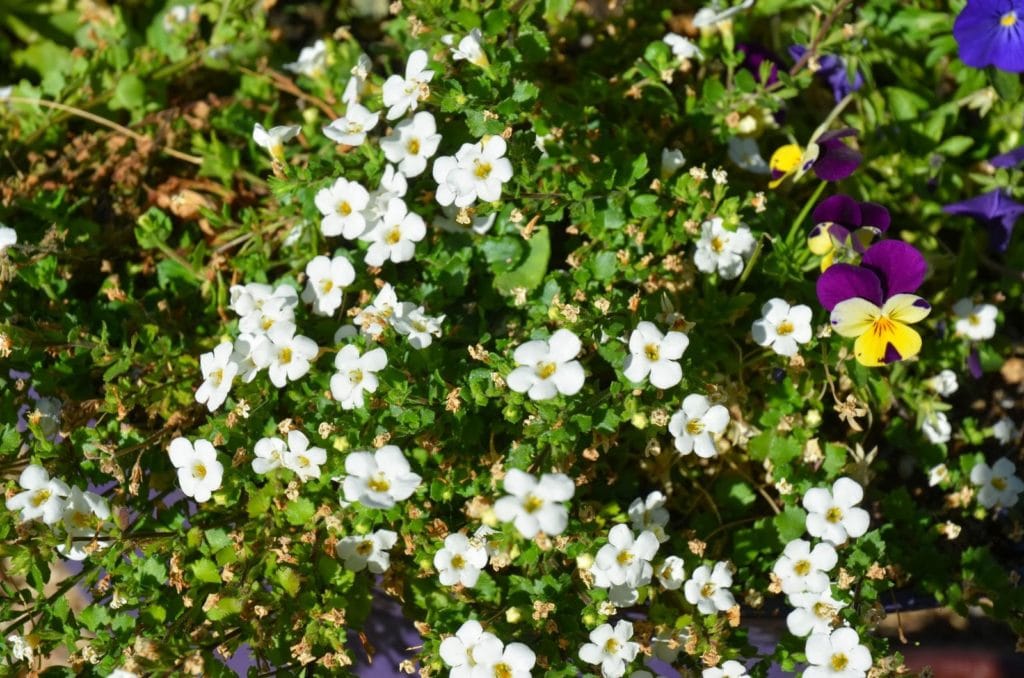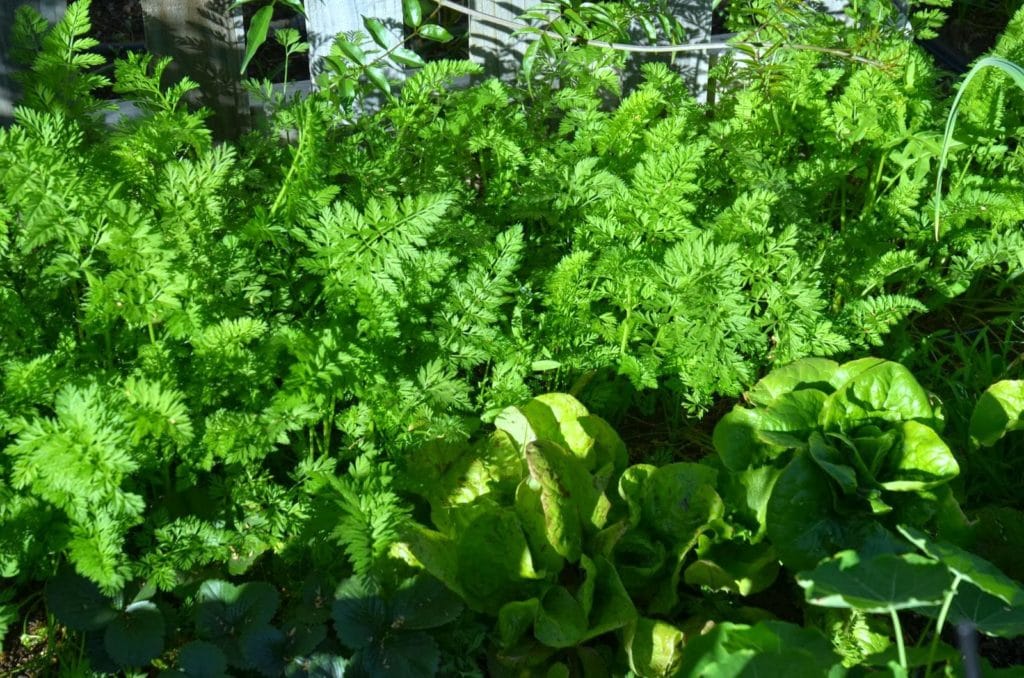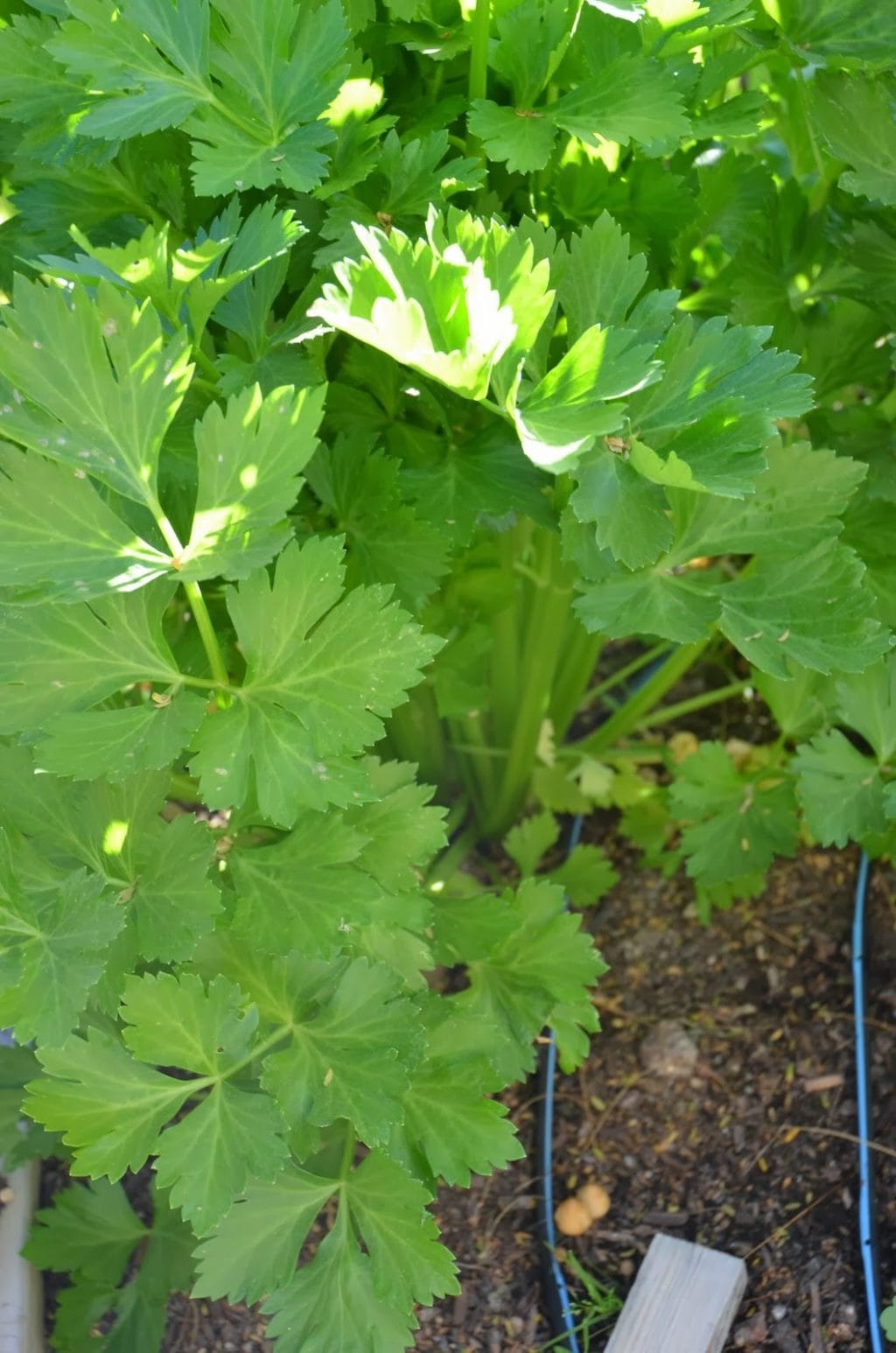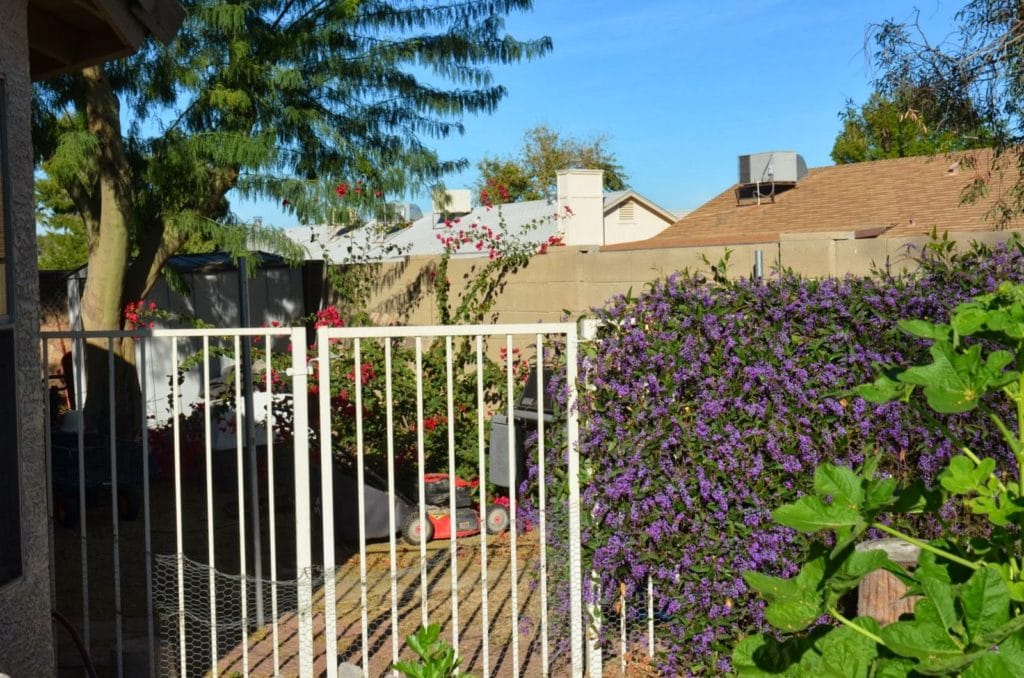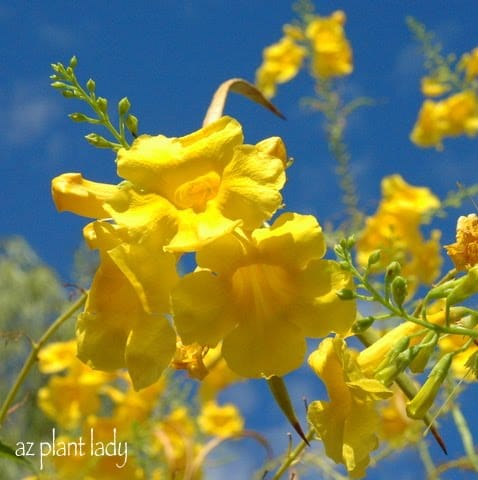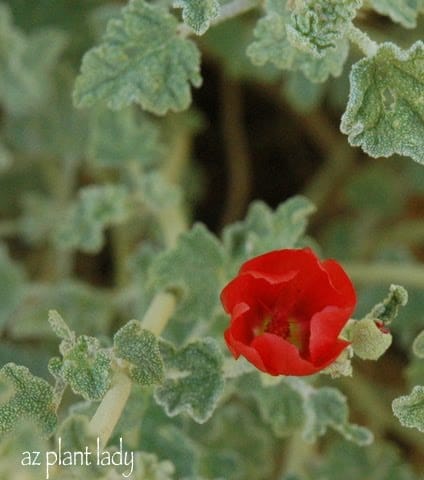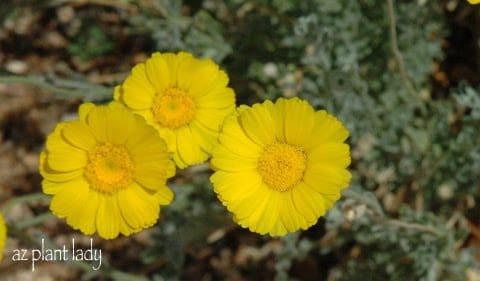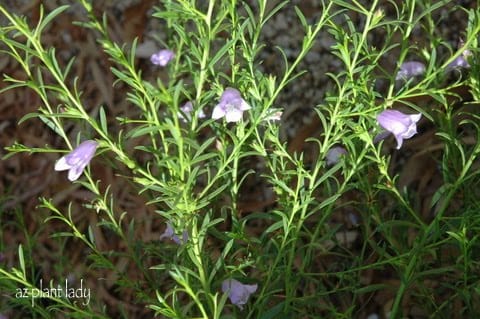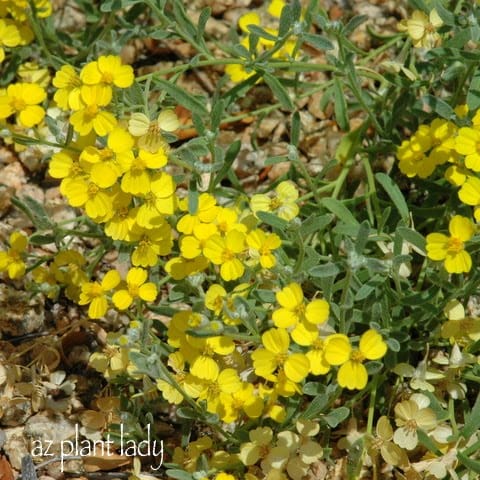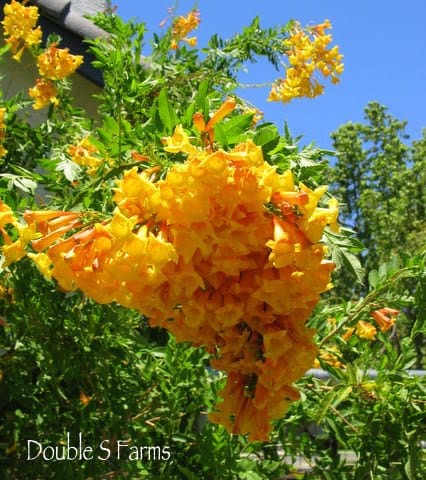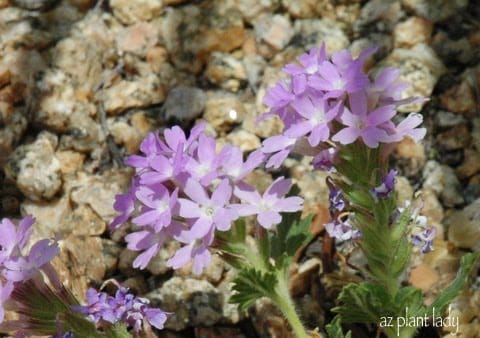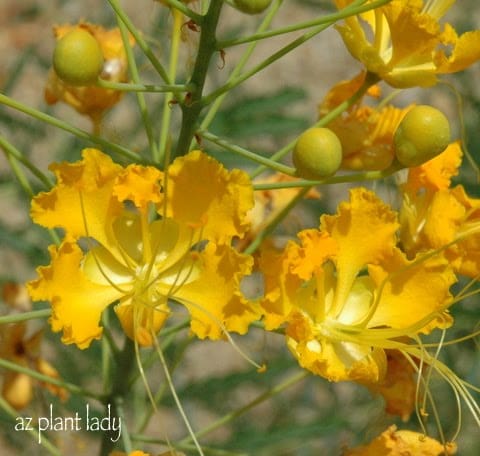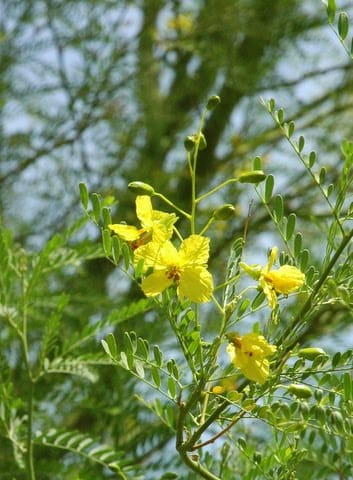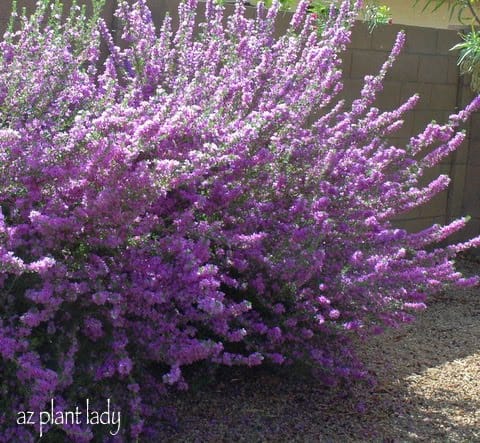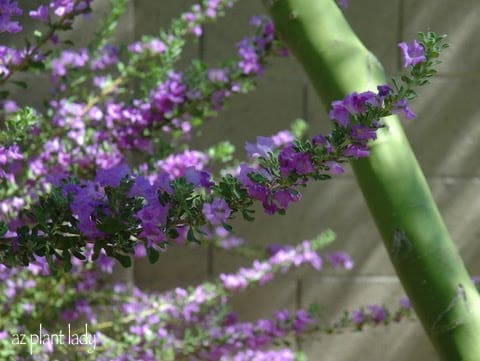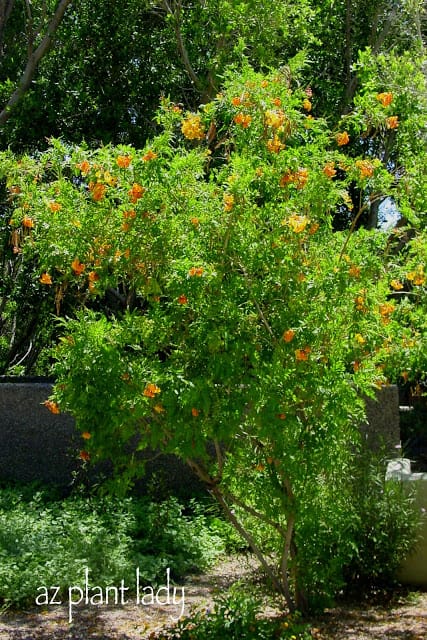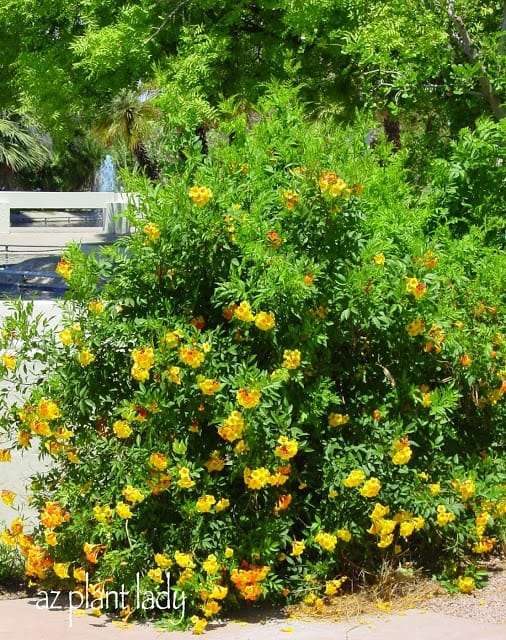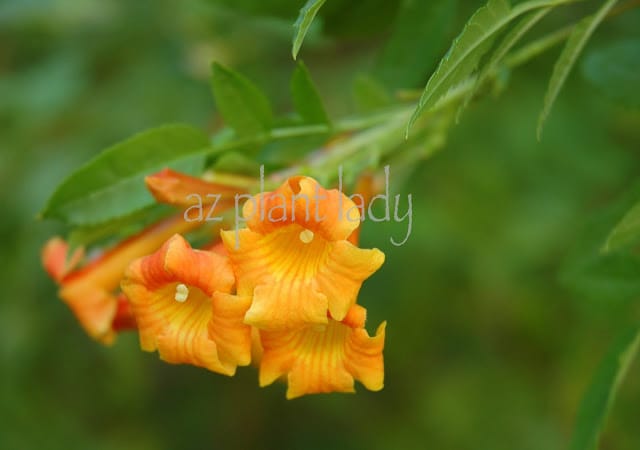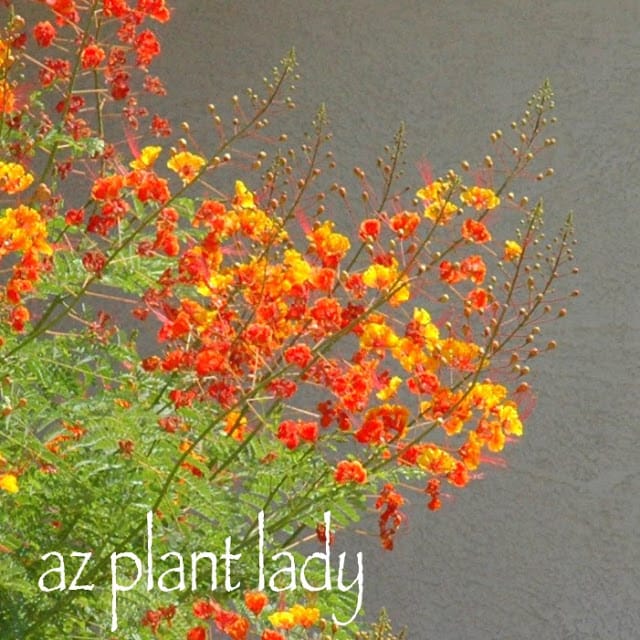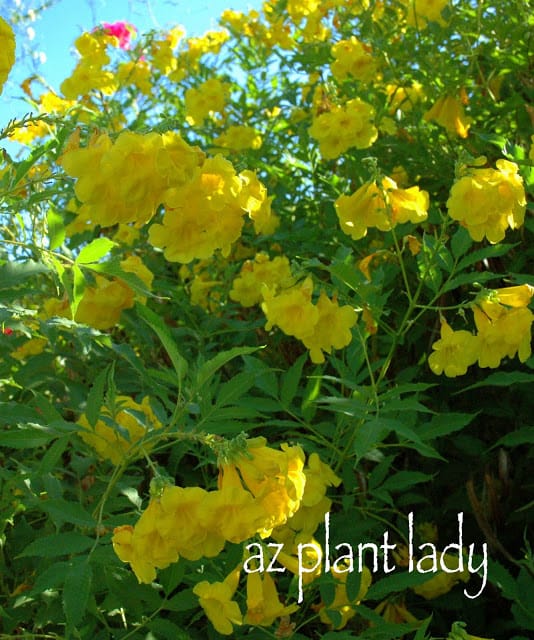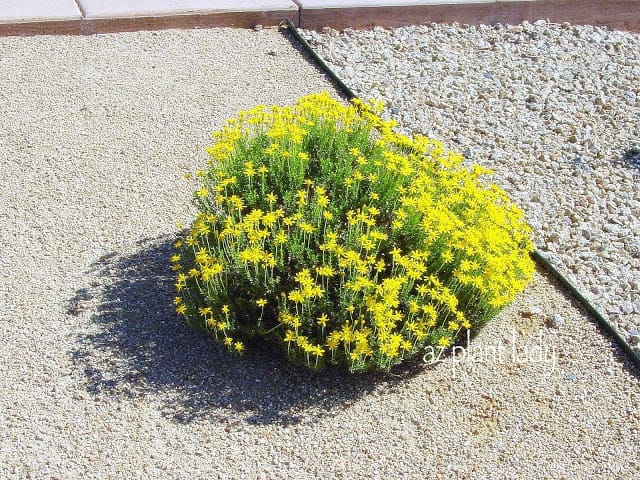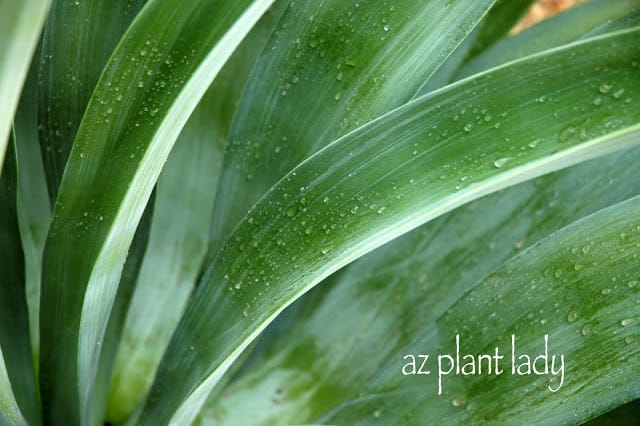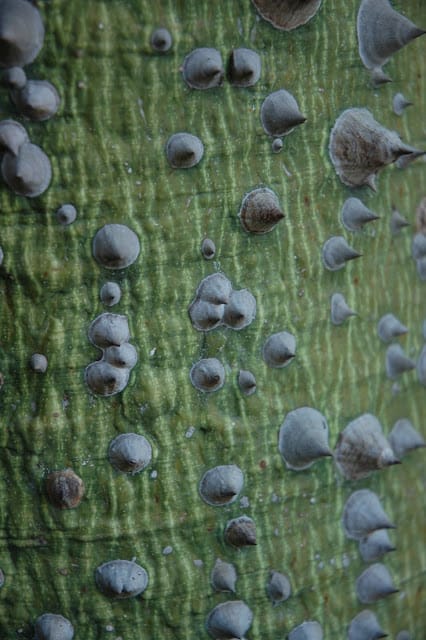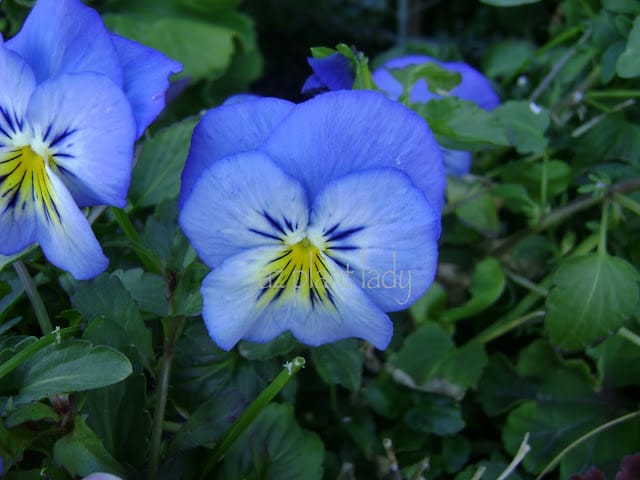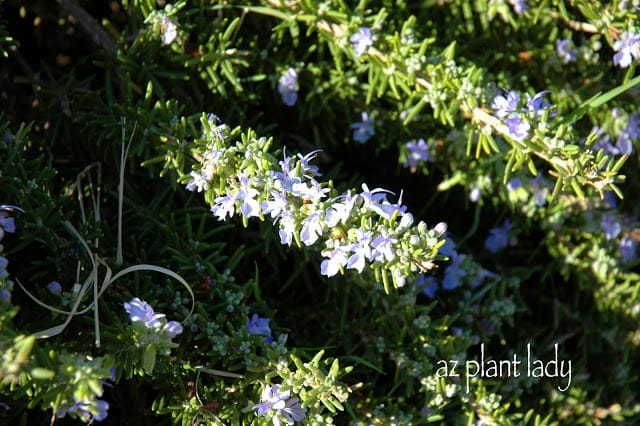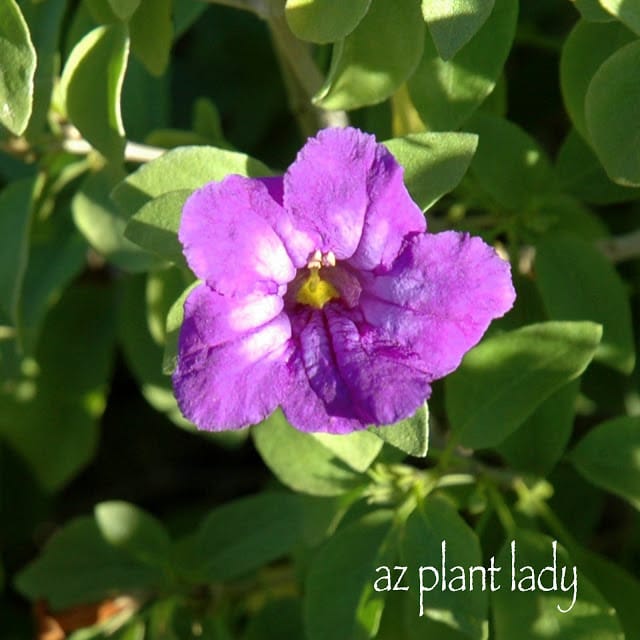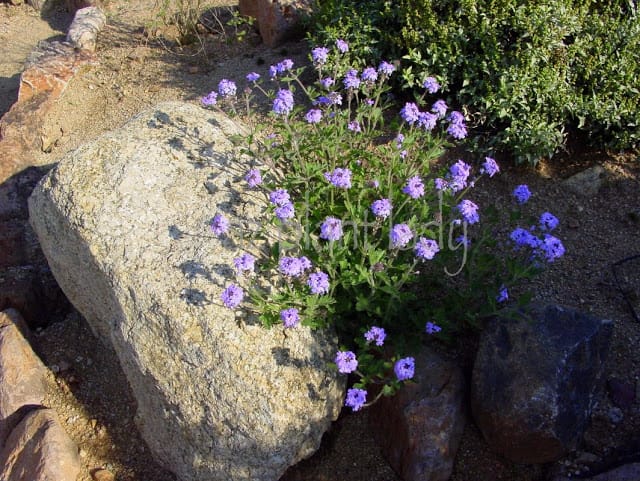What has your winter been like?
Has it been unusually cold or warm? If you live in the Southwest, you have undoubtedly experienced a warmer then normal winter.
As a result, many plants that are usually dormant in winter, are green and blooming even though it is still technically February.
I started wearing sandals 2 weeks ago, but I still haven’t broken out my shorts yet.
Last week, I showed you my edible garden, (also known as a kitchen garden), which is located on the side of our house.
Today, I wanted to show you a peek at what is happening in the back garden during this warm winter.
This is one part of the back garden.
This was my first vegetable garden. Because this garden is close to the house, I like to plant vegetables that are harvested frequently such as leaf lettuce, tomatoes and cucumbers.
To the right, you can see my pink trumpet vine. Behind is a hollyhock getting ready to flower. Against the wall is purple lilac vine in full bloom and peeking through the slats of the fence are nasturtium leaves.
I have two large rose bushes and the ‘Abraham Darby’ rose bush has a few lovely blooms. You may notice that this rose has a rather old-fashioned appearance. This is one of many David Austin shrub roses.
After growing 40 hybrid tea roses in the garden of our first house, I have found that I like shrub roses. They are easier to take care of (need less pruning) and are very fragrant.
The pink trumpet vine (Podranea ricasoliana) growing up against the pillar of my patio has beautiful, pink flowers.
Normally, it suffers some frost damage during the winter, but during this warm winter, I have had pink flowers all winter long. The flowers normally show up in spring and fall and are truly stunning.
I went out into the garden and cut the flowers for a lovely bouquet yesterday.
This plant grows quickly and can be grown as either a vine or a sprawling shrub.
Another plant that usually shuts down for winter is coral fountain (Rusellia equisetiformis). I love the arching branches of this perennial and its orange/red blossoms.
One plant that still looks like winter, is my bougainvillea.
A few days ago, I asked you on my facebook page if you love or hate bougainvillea. I had an overwhelming response with most of you saying that you liked it.
I have two bougainvillea. I used to have more, but while I love the beauty of bougainvillea, I don’t particularly like to prune them, so two words for me.
The blue sky is really the perfect backdrop for the orange, tubular flowers of orange jubilee (Tecoma x Orange Jubilee).
For those who want a tall shrub that grows quickly, then orange jubilee is a great choice.
I recommend using it against a bare wall or to screen out pool equipment.
In fact, I visited a client who used orange jubilee as ‘green curtains‘ for her home.
Right now, my purple lilac vine (Hardenbergia violaceae) has taken center stage in the back garden.
Growing up my south-facing wall, they burst forth in a profusion of purple blooms every February and last into March.
The whiskey barrel planter is a holding area where I have planted my extra plants. I’m not sure what I will do with it later.
In addition to growing purple lilac vine up walls, I also like to grow it as a groundcover too.
*This vine is easy to find in nurseries in winter and spring, when they are in flower. However, you can have a hard time finding it in summer and fall. So if you want one, get it now.
Behind my purple lilac groundcover vine, I have red bird-of-paradise (Caesalpinia pulcherrima) growing.
But, because it is dormant in winter, it isn’t much to look at right now – but I’ll show you how lovely they are this summer.
Hollyhocks have a special place in my garden. I love these old-fashioned flowers and their flowers are truly stunning in spring (they flower in the summer in cooler climates).
They self-seed and come up every year for me. In a month, the flowers will start to burst forth and I can hardly wait.
The hollyhocks are located next to my smaller vegetable garden and receive enough water from the garden without me having to give them supplemental water.
Another old-fashioned favorite flower are nasturtiums. These flowers have a place inside of all of my vegetable gardens.
Not only are they beautiful, nasturtiums also repel bad bugs from bothering my vegetables. Another bonus is that their leaves and flowers are edible.
The bloom in late winter and through spring. I let them dry up in summer before pulling them out. They do drop some seeds, so I always have new ones coming up the next year in the garden.
I have several pots in front of my smaller vegetable garden. In them, I plant a combination of vegetables and flowers, including bacopa, which trails over the edges of pots.
There are carrots and leaf lettuce growing in my second vegetable garden.
I step outside into the garden whenever I need a few carrots for dinner and they taste so delicious.
In the same garden, I am growing celery for the first time. I must say, that I am quite impressed at how well it is growing and can’t wait to taste it.
Last week, I mentioned showing you a part of my garden that I have NEVER shown anyone.
This is my side yard – NOT a garden…
This is the space where we store garden equipment, trash cans and our garden shed. I also have my compost bin in this area.
You can see only half of the side yard in this photo, but you aren’t missing anything by not seeing the rest.
Another purple lilac vine grows along the fence, which hides part of the side yard and a large ‘Desert Museum’ Palo Verde provides welcome shade.
Our second bougainvillea is located along the wall. It is never watered and it has been 3 years since it has been pruned. As you can see, it does just fine being ignored.
And so, I hope you have enjoyed peeking into parts of my back garden. Of course, I haven’t shown it all to you – just the parts that are blooming.
In a few months, I will show the other areas when they are in bloom.
*******************
So, what is blooming in your garden this month?
Do you have a favorite winter/spring blooming plant?
